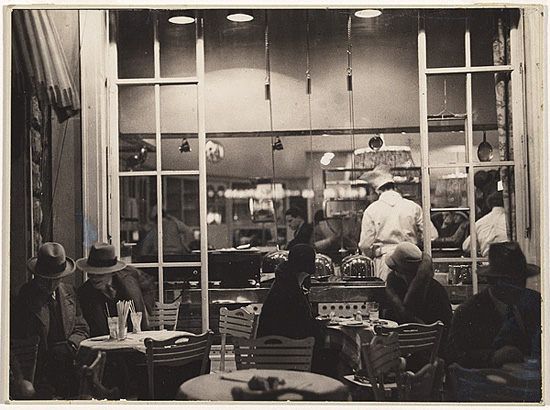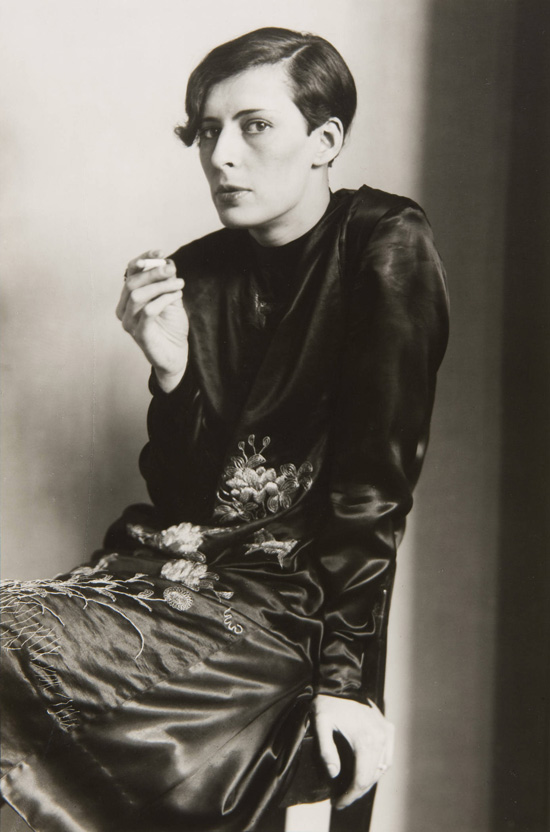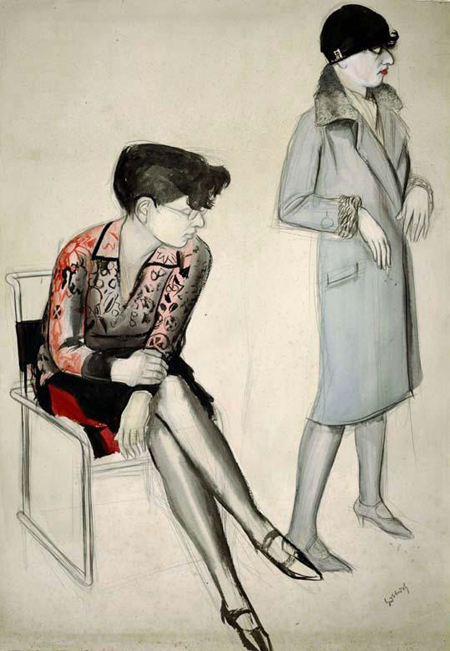Andrew Frost pays a visit to The Mad Square….
Hello newspaper. What do have for us today? Opening the op ed pages and we find that Elizabeth Farrelly has turned her attention to art, as she occasionally does, in an article entitled When art had its eyes wide open.
Basically, it’s a review of Mad Square: Modernity in Modern Art 1910-1937 at the Art Gallery of NSW. The gist of it is that Farrelley likes the show. No, scratch that, she loves it, adores it, has a passion for it that is urgent and vital. She loves the show so much she doubts whether the curators at the AGNSW even know what they have on their hands…
The show’s subtitle, Modernity in German Art 1910-1937, implies a brief flowering in some sodden corner of old Europe. The gallery’s own advertising dwells heavily on words such as ”edgy” and ”provocative”, suggesting a display of faux-punk handbags or framed French knickers. The truly shocking. But The Mad Square is more than that. Much more. It’s about seeing. Really – frankly, fearlessly – seeing.
Farrelly’s big claim is that Mad Square represents a place and time when real art was made about real issues. It’s a sentiment that echoes the banner superlatives selected from that trio of esteemed critics that can make a show a great success: OUTSTANDING [Christopher Allen, The Australian], A SUPERB EXHIBITION [John McDonald, The Sydney Morning Herald], IMPRESSIVE [Sebastian Smee, The Monthly]. Farrelly’s view is that art now is, in her words, “bullshit” and to support this bold claim she selectively quotes some admittedly ill-advised publicity bumpf from the forthcoming Biennale of Sydney.
But anyway…
Felix H. Man’s Kurfurstendamm after midnight, Berlin 1929.
Let’s pull back and think about Mad Square itself. Is it a good show? Yes, it’s great, but not for the reasons you’re probably thinking. The exhibition offers a pretty comprehensive overview of some fairly well-worn areas of modern art history covering as it does the hectic years from 1910 to the outbreak of World War 2. Those decades are the crucible of modernity in the visual arts when many of the major threads of contemporary art practice as it known today were elaborated. Mad Square has a representative selection of Expressionists, Dadaists and Constructivists, there is painting, sculpture, photography, drawing, collage and political posters [left and right], there are movie posters for The Cabinet of Dr. Caligari and Metropolis and there’s a screening room showing clips from some of the films of the great UFA period. There’s even some Bauhaus furniture and delicate tea sets.
There is no major curatorial diversion from an orthodox view of modernist art history in Mad Square. Drawn from a number of overseas and Australian collections the show is a credit to its curator and to the gallery. It’s educational in the best way. As an entry point the show effectively contextualises all its disparate elements into a distinct sensation of place and time, all the urgent political ideas of the day wrapped up in the belief that art had a role to play in those arguments – John Heartfield‘s collages, Otto Dix‘s drawings, Rudolph Schlicheter‘s perverse eroticism, George Grosz‘s nightmares.
The love thrown at this show by Farrelly and the others is understandable. The tragedy of the 20th century was the wiping out of the possibilities of peace, the what could have been and the what if… The reaction and interpretation of the time by artists offers the solace that the human soul, that reactive emotional essence, is alive and recording the horror in ways that, while aesthetic in nature, are true. These are things that contemporary Australian audiences can commune with because they are ideas that defy time and space and connect us back to the era of tragedy.
August Sander, Secretary at West German Radio 1931
Unfortunately for us it also happens to be a staggering cliché. Australians have had a long love affair with European expressionism that has blinded us to just about everything else that has come from Europe and Germany since the end of War War 2. The reason for this has long been speculated upon – perhaps there is some special connection between the spirit of this place and Germany? Is it that the art is just easy to recognise as art with all its expressive brush work, tortured figures and easily decodable symbolism? Maybe, but this romantic view is strangely disconnected from the reality. Farrelly says her last visit to the show was her third and, inspired, she had dug out a DVD of Cabaret and Anna Funder’s novel All That I Am to get into the whole spirit of the thing.
The irony of this view, and it’s not just that of Farrelly, who I have always admired as a writer, but also of that troika of recidivists, is that the spirit of that time, so longed for in safe retrospect, is reviled in its current form. Mike Parr doesn’t have much of a good reputation with McDonald and I dare say he’s not exactly a favourite artist of the others either, yet as an someone who manages to make work in that expressionist tradition mostly free of the clichés we can see that the style has become so known and so safe that no modern Nazis tremble in their Aramani at the thought of a brisk charcoal sketch. The pretentious crime of the curators of the forthcoming Biennale of Sydney is that they use art speak to say they want to make a show that engages optimistically with the present day. Decoded, we can tell that the next BOS is going to be a smorgasbord of art projects under the already out-of-date buzz phrase “relational aesthetics” [and witnessed by its title All Our Relations….]
Karl Hubbuch, Twice Hilde II, 1929.
The Mad Square is a fascinating show because it creates a sense of time and place. The startling realisation is that Germany does in fact feel a lot like now, not so much in the specifics, but as a general feel of space and light. The section of the show that has this strange and strong vibe is called Metropolis. Photographs such as Felix H. Man’s Kurfurstendamm after midnight, Berlin 1929 – a simple record of a late night bar – feels like it could have been snapped in Sydney last week. August Sander‘s portraits of working people have the look and feel of our contemporaries – I’m sure I’ve actually seen the woman in his Secretary at West German Radio 1931 walking along Oxford Street.
The biggest revelation of this show is a selection of figurative paintings representing Neue Sachlichkeit, or the New Objectivity. Luminaries like Otto Dix are represented by his Portrait of the Poet Theodor Dambler, 1927 in which one can detect the traces of influence from Italian painting of the period, but it is in works such as Karl Hubbuch’s Twice Hilde II, 1929, that we feel a sense of anticipation of contemporary figuration. Seemingly casual yet carefully constructed with an echo of photographic process, Hubbuch’s painting is almost timeless in the cold modernity of its look. Free of the emotional and romantic baggage of historical over-familiarity it appears new. The fact that the painters of the Neue Sachlichkeit were among the very few to escape the opprobrium of the Nazis, if only temporarily, also speaks to us of the conflicted nature of art that must operate under a failed system of government, literally painting itself into a corner until there is no paint and no corner left to hide in.
The Mad Square
Art Gallery of NSW
until November 6.



